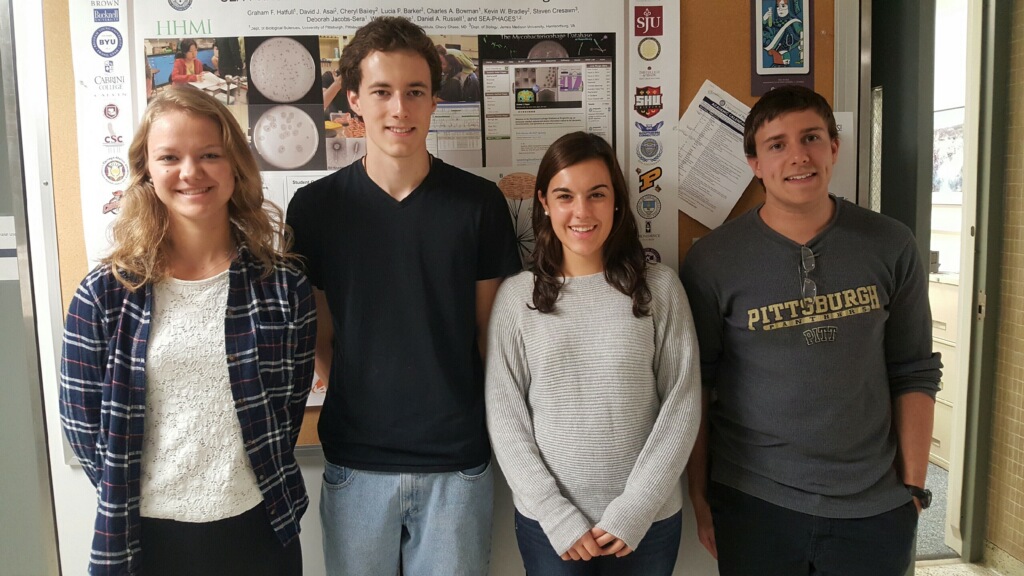Welcome to the forums at seaphages.org. Please feel free to ask any questions related to the SEA-PHAGES program. Any logged-in user may post new topics and reply to existing topics. If you'd like to see a new forum created, please contact us using our form or email us at info@seaphages.org.
Recent Activity
All posts created by debbie
| Link to this post | posted 25 Jan, 2017 16:45 | |
|---|---|
|
|
Persistent Glimmer Failure Remedies Glimmer failures during auto-annotation are most likely due to an ability for that computer to connect to NCBI (where Glimmer resides). Possible explanations are: 1. The Glimmer site is down. But since some computers connect, that is unlikely. 2. The program is not updated. This is difficult to tell because if when the update button is pushed and the program could not connect to the DNA Master website, the response message is “this version is up-to-date”. Do not assume that if you receive this message, your program is up-to-date. To clarify, check the build number, it must be Version 5.23.1 Build2490 03 Dec 2016. (To check go to Help -> About) 3. It could be that the server (ncbi) got too many requests at the same time, so not all connected. Which means “try again”. |
Posted in: DNA Master → Important DNA Master Update
| Link to this post | posted 17 Jan, 2017 22:11 | |
|---|---|
|
|
Hi. I sent your question to Dr. Lawrence, the author of DNA Master. He suggested that "Looks like the database did not install. Likely a permissions problem in that they cannot open those tables because you need administrator access." Are you sure you are running the program as an administrator? |
Posted in: DNA Master → Data Module Error
| Link to this post | posted 04 Jan, 2017 18:06 | |
|---|---|
|
|
Here is the list of phages for the host range project and their titers. Note: Wintermute is a phage found by Bryan Pasqualucci at Southern Connecticut State University (incorrectly labeled in the sheet that was sent with the lysates). Sorry Bryan! |
Posted in: Host-Range Project → Basic Host Range Project Information
| Link to this post | posted 03 Jan, 2017 16:33 | |
|---|---|
|
|
Roy, Happy New Year! I sent an email to Dr. Lawrence and he rebooted his website this AM. I found it to be working now. Thanks for the heads up, debbie |
Posted in: DNA Master → Site down?
| Link to this post | posted 16 Dec, 2016 20:33 | |
|---|---|
|
|
PECAAN (Phage Evidence Collection and Annotation Network) Claire Rinehart, from Western Kentucky University, introduced us to PECAAN at last summer’s Retreat. PECAAN is a companion program to DNA Master (not a replacement), streamlining the complicated decision-making process of Gene Prediction by displaying relevant evidence for each gene on its own web page. It also provides a record-keeping system that can be used as input to create your final DNA Master files. Using PECAAN is optional. You may want to add PECAAN into your students’ workflow once they get the hang of using DNA Master and evaluating the data from the various data sources. Or you may want to use it as a tool for the final review of your genomes because it stores BLAST (PhagesDB and NCBI), HHPRED, and Starterator data for the entire genome and can output this data into DNA Master as a functional file or as a fully annotated file. To gain access to PECAAN, instructors should email claire.rinehart@wku.edu a request along with: Firstname, MI, Lastname Full institution name Approximate number of students in their group. The PECAAN user manual is available on seaphages.org on the Faculty Information page. The user manual contains instructions on how to load phages into PECAAN and how to add your students as users of the site. |
Posted in: PECAAN → User Guide
| Link to this post | posted 16 Dec, 2016 17:12 | |
|---|---|
|
|
Katie, Hi. I just posted a new topic on the Xeno project so you can record results there. Thanks! |
Posted in: Xeno Project → How to Record Results
| Link to this post | posted 16 Dec, 2016 17:04 | |
|---|---|
|
|
Hi all. After you have completed the spreadsheet for your results, you can post it here and complete the summary data on the Google spreadsheet. I just changed access to this spreadsheet so you can now edit it. |
Posted in: Xeno Project → Record Your Results Here!
| Link to this post | posted 16 Dec, 2016 16:17 | |
|---|---|
|
|
As you record your host range data, please upload your Excel sheets to this post! I also just changed setting on the summary Google spreadsheet so you can add your summary data there! |
Posted in: Host-Range Project → Post Results Here
| Link to this post | posted 25 Oct, 2016 20:07 | |
|---|---|
|
|
Jeremy, If you join the program (and go through our training) we set up an MTA between U of Pittsburgh and your school to be able to ship M. smegmatis mc2 155 to you. So you could use your bacteria to pilot and then you will have smeg by August of next year (assuming you are accepted into the program). |
Posted in: Mycobacterium → Other M. smegmatis strains
| Link to this post | posted 22 Oct, 2016 19:35 | |
|---|---|
|
|
The Hatfull Lab Undergraduate researchers prepared the lysates for the Host Range project. The leaders of the group are pictured here: (from left to right) Audrey, Patrick, Gabby, and Johnathon. 
|
Posted in: Host-Range Project → Basic Host Range Project Information


 20Kb
20Kb